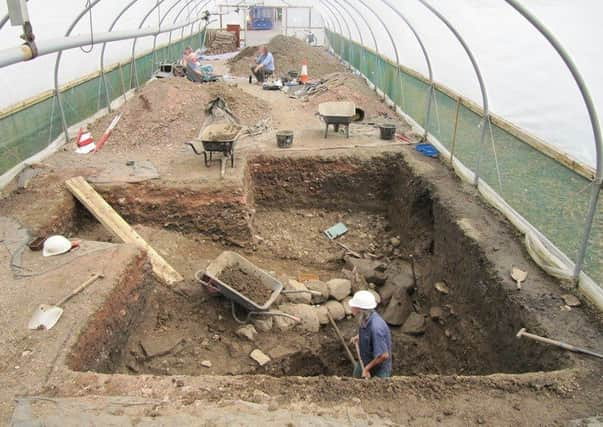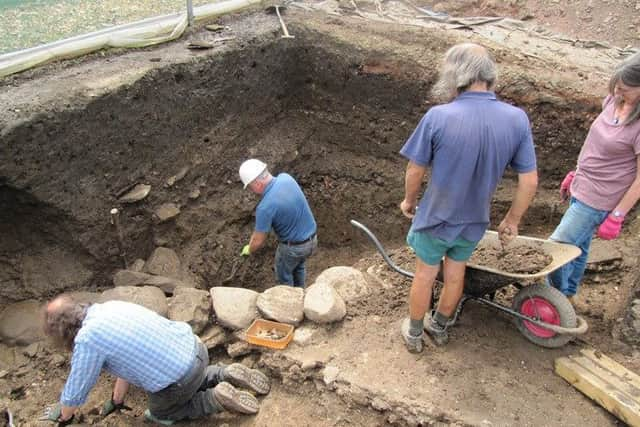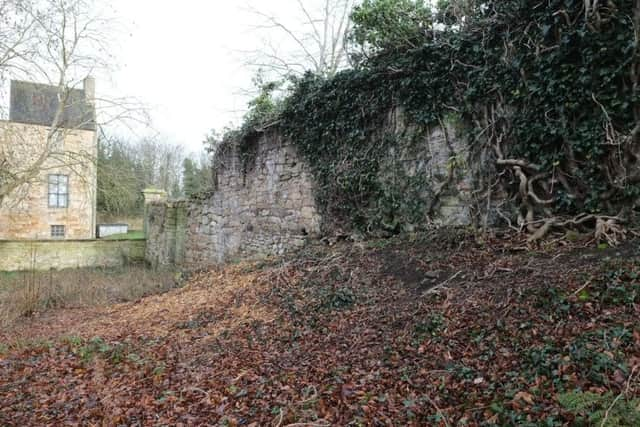Digging into history in Bo’ness to discover Kinneil Estate’s very own castle


But the estate has another mystery which may have been resolved by recent excavations in and around the walled garden.
What happened to Kinneil House’s medieval predecessor – Castle Lyon?
Advertisement
Hide AdAdvertisement
Hide AdThe imposing house and palace were built in the mid-1500s by James Hamilton, Mary Queen of Scots’ powerful Regent and Governor of Scotland.


But there was an earlier, medieval, Hamilton residence here. The mystery? There seemed to be nothing left of it and no-one was sure where it was.
In 1473 James’s grandfather, the first Lord Hamilton, was given royal permission “for the construction and building of a castle called Craglyoune above the sea”.
Later records give the name Castle Lyon.
The ‘crag’ in Craglyoune means rock, but what does “above the sea” mean? Arguably it might refer to a rocky island in the Forth or the rocky escarpment on which Kinneil House now stands.


Advertisement
Hide AdAdvertisement
Hide AdTradition has favoured the island theory. This is because “the ruins of Cast(le) Karig Lyon” are clearly marked on two 17th century maps on an island just off what was then the shoreline at the foot of Castle Loan.
This seemed to be confirmed by reports of castle remains seen in 1805 on then reclaimed land in the same location.
The problem is that these two maps of 1614 and 1640 are based, indeed partly just copied, from an earlier map made by the cartographer Timothy Pont between 1583 and 1614. Neither island nor castle is shown on this earlier, more authoritative map.
There is no other evidence for an island or castle and not much chance of finding archaeological remains in the reclaimed land on the old iron works site below Castle Loan.
Advertisement
Hide AdAdvertisement
Hide AdBut what if the castle was not on an island but on the escarpment near the present day Kinneil House?
What if the ‘Crag’ in Craglyoune referred to the rocky escarpment above the Crawyett, near the medieval village and church of Kinneil?
This would fit and still be consistent with a position “above the sea”.
Logically, a medieval fortified tower would have been built in a prominent position along the line of the Roman Antonine Wall.
Advertisement
Hide AdAdvertisement
Hide AdMany later fortified towers, such as Carriden and Inveravon, were built on the line of the wall.
Last summer an archaeological excavation led by Geoff Bailey, Falkirk’s keeper of archaeology and local history, found evidence of what may have been Castle Lyon just a few yards to the east of Kinneil House.
It may have been staring us in the face all the time!
Geoff’s team, helped by pupils from Kinneil Primary School, cleared the vegetation from the corner wall of the walled garden, now the council nursery, and laid bare the remains of the early 15th century building.
The wall here is taller and thicker than elsewhere, with blocked up windows and corner quoins – large stones used to strengthen the corners of buildings.
Advertisement
Hide AdAdvertisement
Hide AdBut could this be some other large medieval building, not Castle Lyon?
The tie-breaker was the remains of a defensive ditch around the building, remains that can be dated to the time of Castle Lyon.
This brings us to another of the excavation’s discoveries – the remains of the medieval ditch.
You would not build a defensive ditch – a moat – around anything less than a fortified tower.
Advertisement
Hide AdAdvertisement
Hide AdSo it seems likely, although not certain, that Castle Lyon was built in 1473 on the high ground above the Forth, on the line of the Antonine Wall, near to the village and church at Kinneil and the future site of Kinneil House and Palace.
Kinneil Park is open to the public so you can go and look at the evidence for yourself.
Kinneil Museum is open 12.30pm to 4pm daily, except Tuesdays and during Kinneil House open days.
The first open day of the 2019 season is taking place on March 23, to coincide with the town’s HippFest events.
Advertisement
Hide AdAdvertisement
Hide AdFuture open days will be advertised by Historic Environment Scotland and the Friends of Kinneil on their websites and social media pages as soon as they are confirmed.
The team hopes to be back digging at Kinneil this summer, concentrating on the approach to Kinneil House where the geophysical survey suggests there may be the remains of a protective forework and gatehouse.
These would date to the 1550s but were demolished by rivals within 30 years to make the house less defensible.